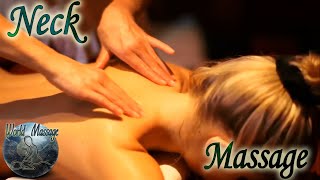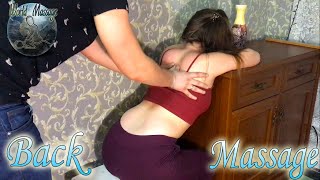Sunday, 11 January, 2026г.
















Где искать: по сайтам Запорожской области, статьи, видео ролики
пример: покупка автомобиля в Запорожье
BACK MASSAGE ASMR - technique for man - Tutorial
More massage and ASMR videos: http://www.massage-asmr.com/
Facebook: https://www.facebook.com/MTAMassageTherapy
? PLAYLIST TO SEE ?
Abdominal massage for STRESS MANAGEMENT - Relax technique:
► https://youtu.be/wsAY2Bqfniw
Low BACK PAIN (LBP) - Massage Technique for women:
► https://youtu.be/o5IE3lU-2wk
Belly massage - Energizing and Relax - ANTI CELLULITE
►https://youtu.be/IUNbqWoHS1M
Tummy massage - LYMPHATIC DRAINAGE - OIL MASSAGE
►https://youtu.be/yu021BKaPrs
How To Give Someone a Energizing Foot Massage
► https://youtu.be/mjBm8oboMxY
BACK MASSAGE ASMR - technique for man - Tutorial
► https://youtu.be/myJxFNVWUiY
If you like SUPER SLOW MOTION vist this channel:
https://www.youtube.com/channel/UC-rU3J-Vfd4tAURBpPxZrRA
A good back massage can help relieve lower back pain. After a strenuous workout or sitting at a desk all day, your back muscles are likely to be tense from overuse or repetitive use. When a massage therapist works those muscles, some of the tension is released.
Massage was once considered a luxury—something you’d enjoy at a spa or health club. However, the benefit of a massage is now considered a more mainstream therapy and is often recommended by doctors and other medical professionals. The Mayo Clinic staff recognizes massage as part of an overall wellness program. You may choose to have a full body or isolated area massage. One of the most common and beneficial parts of the body for massage is the back, since the nerves run through the spine.
ASMR Definition:
Autonomous sensory meridian response (ASMR) is an experience characterised by a static-like or tingling sensation on the skin that typically begins on the scalp and moves down the back of the neck and upper spine. It has been compared with auditory-tactile synesthesia. Autonomous sensory meridian response (ASMR) signifies the subjective experience of 'low-grade euphoria' characterised by 'a combination of positive feelings, and a distinct static-like tingling sensation on the skin'. It is most commonly triggered by specific acoustic, visual and digital media stimuli, and less commonly by intentional attentional control
Теги:
back massage massage of back massage back asmr massage massage asmr technique oil how to massage how to asmr for man tutorial how to give massage relaxation wellness spa oil massage massage therapy therapy
Похожие видео
Мой аккаунт


 У вашего броузера проблема в совместимости с HTML5
У вашего броузера проблема в совместимости с HTML5


